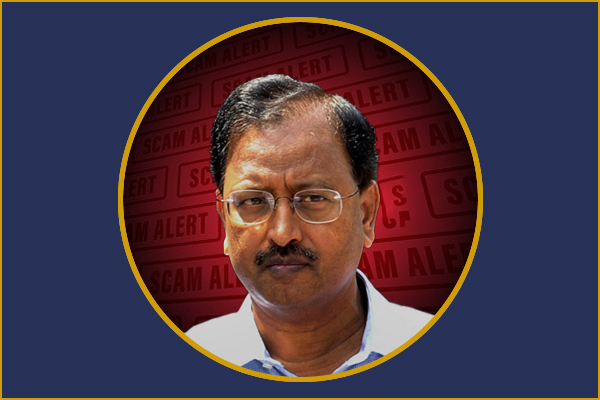Satyam Scam

Table of Contents
While the global financial crisis hit in 2008, India was experiencing not just an economic problem but also a social dilemma. Assume a fictional example in the share market in which a company's core funds are distorted. Satyam Computers Scam found this to be true. The owners of Satyam have proven to be responsible for the Company's blurring out of 7000 crores. They deceived the nation, the markets, and clients by fabricating accounting records.
The Satyam scam case study highlights several flaws in the Indian regulatory process. Thus in 2009, the Satyam computers scam was finally exposed. Analysts have dubbed the Satyam scam a new kind of Indian Enron. The following is an overview of how the Satyam scam happened that rocked the country during an economic downturn and its consequences. It also explains who committed this theft and how the crime was handled.
An overview of the Satyam Scam Case
- Satyam Computer Services Ltd was established in Hyderabad in 1987 by the two brothers, Rama Raju and RamalingaRaju. The firm was highly profitable. As a result, they decided to list the Company on the Bombay Stock Exchange in 1991. Satyam Ltd's shares were 17-times oversold at the time.
- Deere and Company became the Company's first Top 500 customer after that. Subsequently, the Company overgrew and became an essential player in the market. As a result, the Company was regarded as a market leader and has won various awards.
- Remarkably, their gross sales exceeded one billion dollars in a blink of an eye, and by the end of 2008, it had crossed two billion. Satyam has surpassed TCS, Wipro, and Infosys to become the fourth largest IT software company globally. The firm burst through crackers of success very quickly as the Company expanded to more than 20 countries.
- Mr.Raju was honored with the Ernest and Young Entrepreneur of the Year Award in 2008, which highlighted his entrepreneurial expertise. It is believed that the Satyam Computers scam started in late 2008 when the brothers wanted to join Matyas. However, the integration of the two enterprises resulted in a storm of regulatory challenges, putting the Raju brothers in hot water.
- Raju stepped down from his chairmanship and issued a five-page confession statement. In it, he confessed that he had committed financial fraud by conducting a Satyam scam for 7000 crores.
Satyam Scam case Study: A Reality Behind The Scenes
- To comprehend the Satyam scam, we must take a step back to 1999, when the Raju brothers planned a massive fraud to raise their revenue artificially. An increase in profits would result in significant profit growth. However, in the reports presented on October 17, 2009, quarterly earnings were overestimated by 75% and 97% of the total.
- To increase profits, the Company's global head of internal audit had started doing another crime, setting up forged client IDs and receipts. The brothers achieved this by altering and manipulating the records and bank statements to their convenience.
- For accounting, most businesses implement an ERP system. However, the Raju brothers relied on their skills and created an accounting ERP system. Unfortunately, there were various flaws with this system. As a result, inserting fraudulent invoices and bank statements was a piece of cake for the Raju brothers.
- It was believed that fake bank statements would include more cash than genuine versions. So this money was transferred to a fixed deposit bank. The total amount of FD was approx 5000 crores. The one who disclosed the Satyam Scam was Merrill Lynch after finding massive accounting irregularities in Satyam's records.
Auditor's Involvement in Satyam Scam Case
Since the Satyam scam case stayed unnoticed for a long, many people seem to assume that chartered accountants are linked to the Satyam Scam, i.e., Price Waterhouse (hence known as PWC) India. The involvement of PWC in the Satyam scam is similar to the action of auditors in the Enron case. The SFIO investigation also claimed that the accountants were careless in completing their legal responsibilities and standardizations since they exploited Satyam's technologies rather than external agency mechanisms.
Auditors, in this case, weren't just reluctant to present a realistic perspective to the world. They also acted illegally by granting the corporation an unsoiled image and portraying the accuracy of the accounting records. The Satyam scam case demonstrates the flaws in managing and evaluating auditor procedures. Unfortunately, PWC has been overseeing the business's accounting for the past nine years and has yet to uncover a massive fraud.
The Impact of the Satyam Scam Case
- The Indian government immediately initiated an investigation of the Satyam Scam case, but it stayed out of it as much as possible. Instead, the government-appointed two directors to Satyam in an attempt to save the Company; the intention was to liquidate it within three months.
- The directors immediately convened a meeting with bankers, auditors, attorneys, and legislative figures to plan a disposal approach. As a result, the management board hired Goldman Sachs and Avendus Capital to sell the Company as quickly as possible.
- Despite hitting a maximum of 544 rupees in 2008, Satyam's shares fell to 11.50 rupees on January 10, 2009, its cheapest value since March 1998. Shares of Satyam hit $29.10 Satyam investors suffered a loss of $2.82 billion.
- Mr.Raju is accused of engaging in criminal activity, lying, and deception. During the Satyam fiasco and PwC's involvement, creditors became cautious of PwC's customers, causing a 5% to 15% drop in the value of about 100 different company's stocks. In addition, the news of the scandal sparked panic in the Indian exchange market, with the flagship Sensex index dropping by more than 5%. Shares of Satyam fell more than 70%.
Satyam Scam Case: The Statement of Ramalinga Raju
On January 9, 2009, Mr.RamalingaRaju quit, and board members admitted to years of accounting irregularities. Due to this revelation, it was found that the Company owed almost $ 1.04 billion in bank loans and cash. As a result, the assets were likewise given a lower rating than their actual value. In addition, Raju created numerous bank accounts and used them to bloat balance sheets with fake funds.
Government action against Satyam scam case
The CBI was charged with probing into the Satyam Scam. Because of their vast fraud, the brothers and auditors were sentenced to prison and fined a large sum of money. Tech Mahindra has acquired the organization. After the scam, the government and SEBI implemented several measures to make it more difficult for increasingly tricky fraudsters. The Companies Act of 2013 included many proposed rules. Companies must now hire qualified auditors every ten years. Various protections and preventive procedures are in place.
Satyam Scam Case: The Conclusion
Two aspects have resulted from this high-profile Satyam scam case and the public need for total transparency and honesty in accounting. For starters, external audit capabilities have become increasingly crucial in deciphering complex accounting techniques that have obscured financial accounts. Furthermore, the media outcry for reform and accompanying statutory law have altered the global Company Governance landscape. The Satyam scam has crushed the expectations of a variety of shareholders.
Satyam scam case has stunned the officials and authorities and raised questions about legal accountants' accounting processes and internal control requirements in India. The aforementioned organizational debris has resulted in severe company practice. The preceding discussion demonstrates that Satyam's leadership disregarded the auditing sector's ethical standards and norms.
Unlike the Satyam Scam, no other scam has targeted CAs and audit companies. High-profile crimes have a negative impact not only on the corporation but also on the sector and economy. "By the Satyam computers Scam in 2009, the Raju brothers demonstrated that the path they chose to achieve has a terrible outcome for their luxurious lifestyle. It teaches the next generation that doing that is a freeway will end their carrier".

















